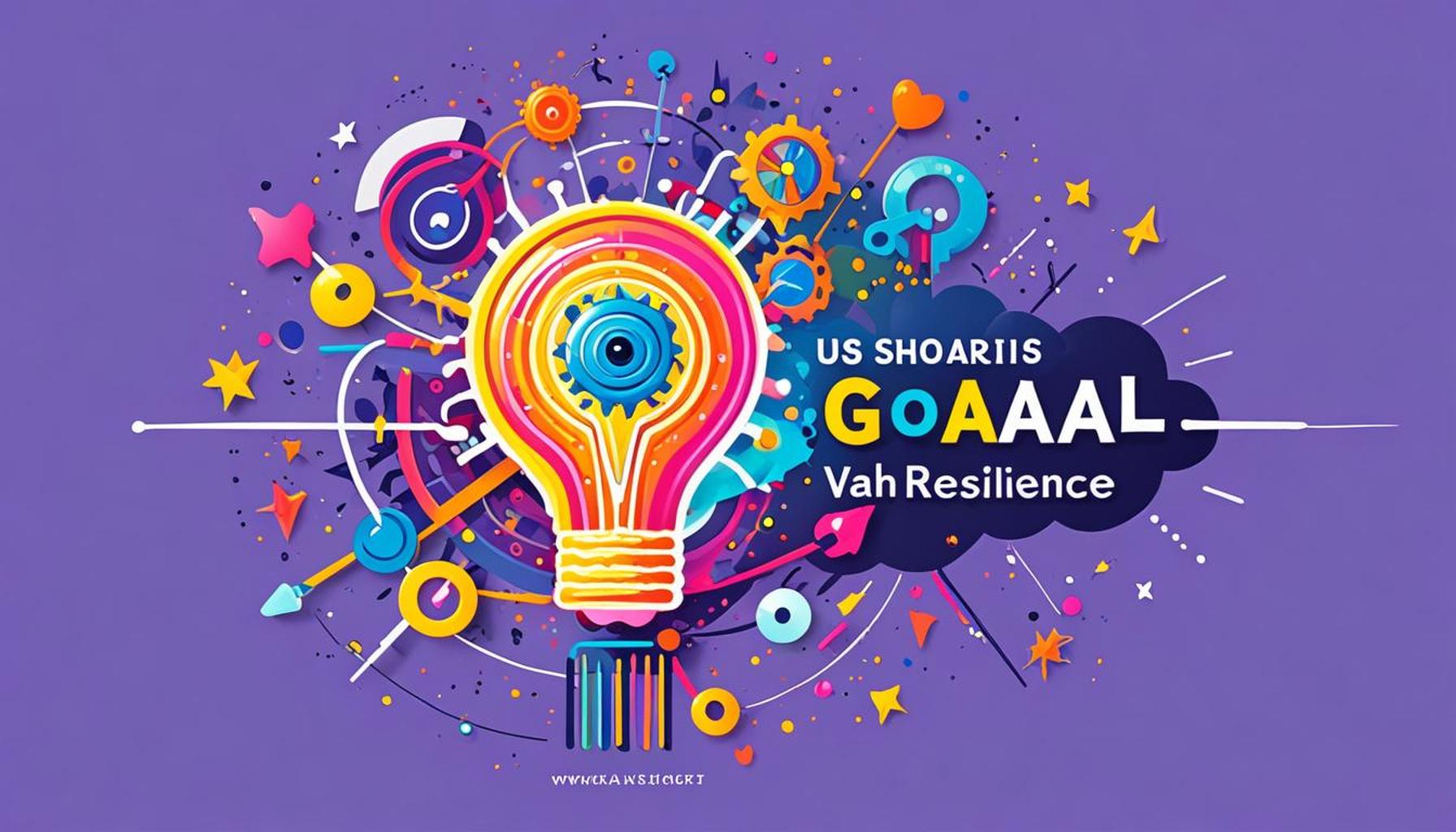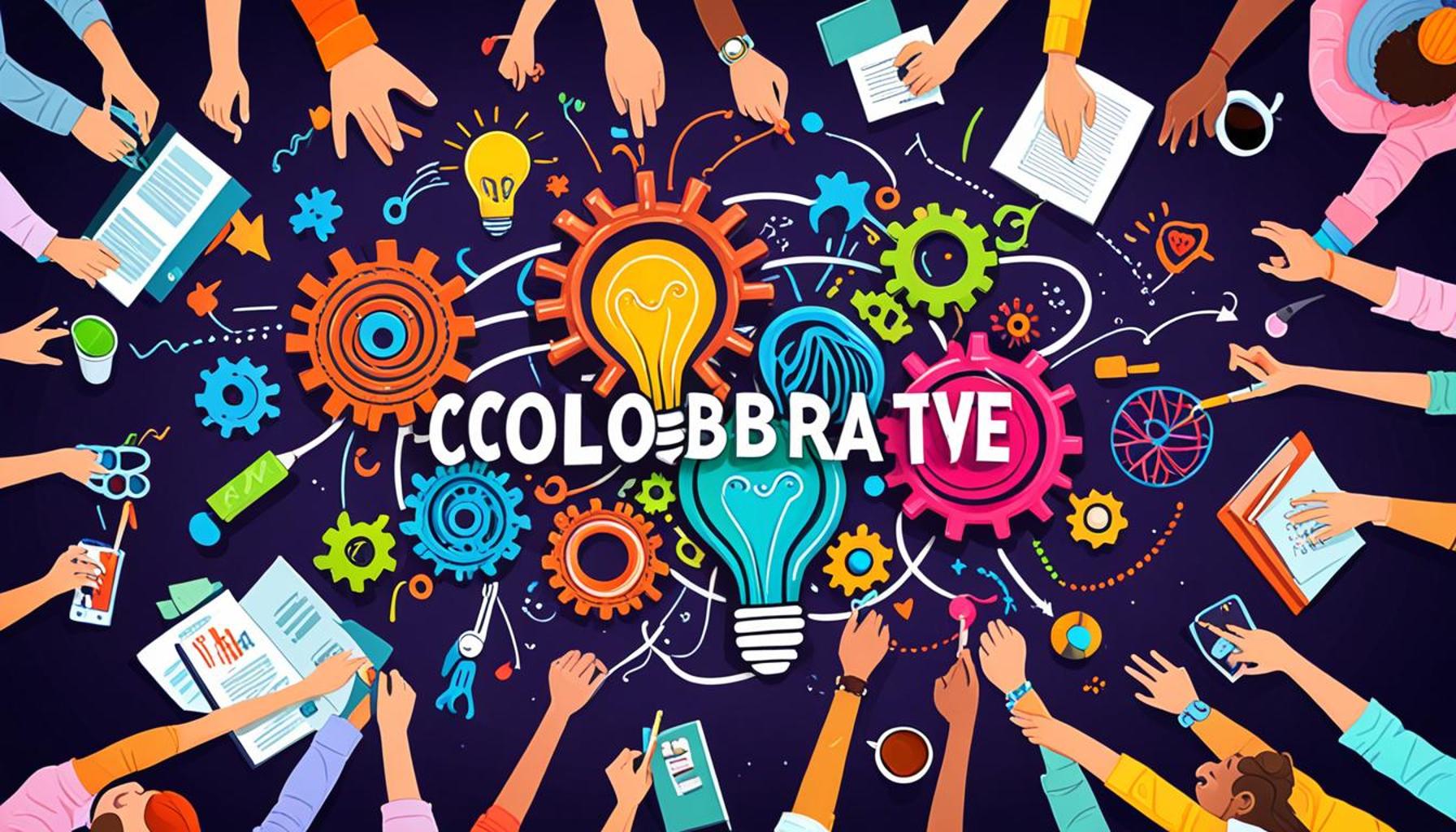How Goal Visualization Can Boost Resilience and Learning

The Power of Visualization in Personal Growth
Every night, as a young Nigerian student lays down to rest, they embark on a journey in their mind that goes far beyond their immediate reality. With each session of visualization, they craft images of wearing a white coat, walking through hospital corridors, and confidently engaging with patients. This transformative practice, commonly referred to as goal visualization, serves as an invaluable tool for not just students, but individuals across all walks of life seeking to enhance resilience and improve learning outcomes.
So, what exactly is goal visualization? More than just fanciful daydreaming, it encompasses a structured mental exercise that can reshape behaviors and attitudes. The process involves forming vivid images of successful outcomes to create a solid emotional experience tied to achieving a specific goal. Here are some key benefits of visualization:
- Increase motivation: Envisioning success can ignite a passion within individuals, making them eager to pursue their ambitions. For instance, a student may visualize graduating at the top of their class, spurring them to study harder and stay committed to their studies.
- Enhance focus: In a world filled with distractions—like noise from bustling streets or the allure of social media—visualization helps individuals hone their concentration. When a student sees themselves acing an exam, they are more likely to tune out interruptions and dedicate quality time to studying.
- Boost confidence: Regularly picturing scenarios of success fosters self-belief and arms individuals with the tools to tackle challenges. For example, a budding entrepreneur in Nigeria can visualize successfully pitching their idea to investors, thereby reducing anxiety when it comes time to present.
In Nigeria’s competitive educational landscape, where students often face high pressures to succeed, adopting visualization techniques can be a game-changer. By incorporating goal visualization into their daily routines, students and professionals alike cultivate a resilient mindset that empowers them to face hurdles head-on. Beyond mere academic achievements, these techniques can foster a holistic development of character and emotional strength, essential qualities in any field.
This article aims to delve deeper into the principles of goal visualization and showcase its profound impact on resilience and learning. Join us as we explore compelling success stories—from students in Nigerian universities who have leveraged visualization to secure placements in prestigious medical schools, to professionals who have harnessed this method to advance their careers. With expert insights and practical examples, we will illustrate why embracing this potent technique is essential in the quest for personal growth and fulfillment.
CHECK OUT: Click here to explore more

Understanding Goal Visualization: Techniques and Benefits
At its core, goal visualization is a technique that can unlock the potential of the human mind, particularly in settings where challenges abound, such as Nigeria’s fast-paced educational environment. While the idea of visualizing success may seem simplistic, numerous studies highlight its psychological foundations and benefits. It is essential to understand how this practice can foster resilience, enabling students and professionals to navigate obstacles with greater ease.
The process of visualization typically involves several well-defined steps that can be easily integrated into daily routines. First, individuals are encouraged to identify specific goals, whether they are academic, professional, or personal. Next, they create an image of this goal as clearly and vividly as possible, often incorporating sensory details such as sounds, feelings, and surrounding environments. This not only makes the vision more realistic but also strengthens the emotional ties to achieving it. Finally, regular practice, ideally daily, reinforces these mental images, promoting a positive psychological impact that can translate into real-world success.
Research supports the idea that mental imagery can alter brain pathways, making it easier to achieve those set goals. For instance, a study published in the journal “Sports Medicine” showed that athletes who practiced visualization techniques improved their performance more significantly than those who only engaged in physical training. Similarly, students who envisioned themselves succeeding in their studies were found to experience improved academic performance and reduced test anxiety.
To further appreciate the impact of goal visualization, consider the following benefits that this method can provide:
- Enhances Emotional Regulation: By visualizing success, individuals can experience the resultant positive emotions, which help in managing stress and overcoming fear of failure—critical components in maintaining resilience.
- Fosters a Growth Mindset: When individuals consistently visualize their potential for success, they build a greater belief in their abilities. This growth mindset encourages continuous learning and adaptability in the face of challenges.
- Aids in Goal Commitment: Visualization reinforces the importance of goals, making individuals more committed to achieving them. The deeper the emotional connection formed during the visualization process, the stronger the drive to succeed.
For many students in Nigerian universities, juggling academic responsibilities and personal aspirations can feel overwhelming. Yet, goal visualization offers a ray of hope. By incorporating this simple yet powerful technique into their lives, students can amplify their strength to endure setbacks, while sharpening their focus on learning. This not only aids in academic pursuits but also contributes fundamentally to personal development.
In the following sections, we will explore real-life examples of how Nigerians from diverse backgrounds have utilized goal visualization to achieve their aspirations, thereby solidifying its place as a transformational tool in the quest for personal growth and success.
| Advantages | Impact |
|---|---|
| Enhanced Focus | Goal visualization helps individuals maintain concentration on specific objectives, thereby improving overall productivity. |
| Emotional Regulation | Visualizing achievements enables better control over emotional responses to challenges, fostering resilience in tough situations. |
| Motivation Boost | Those who regularly visualize their goals are significantly more motivated to pursue their learning journeys, making persistence easier. |
| Increased Self-Efficacy | By envisioning success, individuals develop a stronger belief in their abilities, thereby enhancing their willingness to tackle new learning challenges. |
The effectiveness of goal visualization is notably profound in educational settings, where students can vividly picture their academic aspirations. For instance, visualizing a successful exam outcome not only sharpens focus but also reduces anxiety, creating a conducive environment for learning. Furthermore, it fosters a mindset geared towards achieving success, which feeds into a continuous cycle of setting and achieving new goals.When individuals engage in regular goal visualization, they effectively create a mental blueprint for coping with setbacks. This proactive approach is particularly crucial in high-pressure scenarios where resilience and composure are paramount. By harnessing the power of their imagination, learners can bolster their confidence and improve their emotional management skills, making them more adept at overcoming obstacles.Engaging in these practices can fundamentally shift one’s learning paradigm, driving a persistent pursuit of knowledge backed by visualization techniques. The dynamics of goal visualization offer a blend of psychological resilience and academic achievement, paving the way for deeper insights into the capacities inherent in every individual’s potential. The amalgamation of these aspects leads to the cultivation of a growth mindset, emphasizing the importance of continuous learning through challenges.
ADDITIONAL INSIGHTS: Expand your understanding here
Real-Life Applications of Goal Visualization: Inspiring Stories
In a country as diverse as Nigeria, the power of goal visualization can be seen in numerous stories of individuals who have harnessed this technique to overcome adversity and achieve remarkable results. These stories not only serve as motivation but also highlight the transformative potential of visualization across various sectors.
Consider the journey of a young Nigerian entrepreneur, Ifeoma, who sought to revolutionize the agriculture sector in her community. Faced with financial constraints and minimal resources, she turned to goal visualization to articulate her vision of success. Every morning, Ifeoma would visualize herself leading a thriving cooperative of local farmers, imagining the high yields, satisfied customers, and community support that would follow. This exercise not only reinforced her commitment to her goals but also equipped her with the resilience needed to face setbacks, such as initial rejections from potential investors. Over time, her persistent visualization paid off, as she successfully launched a profitable agribusiness, inspiring others in her community to follow suit.
In the realm of education, countless Nigerian students have also reaped the benefits of visualization techniques. Chike, a university student struggling with his coursework, found himself battling intense anxiety before exams. Determined to succeed, he learned about goal visualization from a mentor. By envisioning himself walking into the examination hall, feeling calm and confident, Chike gradually began to change his mindset. He practised this technique daily, and the result was striking; his academic performance saw a significant boost, coupled with a newfound sense of control over his anxiety. Research indicates that students who employ visualization techniques often outperform their peers, particularly in high-pressure scenarios such as examinations.
Moreover, organizations are increasingly recognizing the power of goal visualization within their workforce. Companies like Andela, which trains software developers in Nigeria, have integrated visualization practices into their training programs. Employees are encouraged to visualize their career progression, helping them stay motivated and engaged despite the competitive tech landscape. This approach has been linked to higher retention rates and overall employee satisfaction, illustrating how visualization can be a powerful tool for organizational growth.
On a broader scale, the Nigerian sports fraternity has also embraced goal visualization. Ahead of the 2024 Olympic Games, athletes have begun adopting mental imagery techniques to enhance their performance. The Nigerian relay team, for example, recently worked with a sports psychologist who introduced them to visualization exercises, focusing on the feeling of victory and team synergy. Preliminary results indicated improved team dynamics and a renewed focus on training, crucial for their quest for success on an international platform.
The evidence is compelling; goal visualization does not merely serve as a motivational aid—it actively contributes to resilience and learning. As awareness of this technique continues to grow, more individuals across Nigeria are likely to explore its potential, unlocking pathways to personal and professional excellence. These stories of triumph illustrate the undeniable impact that visualization can have, reinforcing the belief that with the right mindset and intention, challenges can transform into stepping stones toward success.
ADDITIONAL INSIGHTS: Expand your understanding here
Conclusion: The Transformative Power of Goal Visualization
In conclusion, the concept of goal visualization emerges as a powerful and accessible tool for fostering resilience and enhancing learning across various sectors in Nigeria. The inspiring stories of individuals like Ifeoma and Chike demonstrate how this technique can transform adversity into opportunity, instilling a sense of purpose and direction amidst the challenges of daily life. Through visualization, they not only maintained their focus but also equipped themselves with the mental fortitude necessary to navigate setbacks and achieve their aspirations.
The diverse applications of goal visualization—from education to entrepreneurship and sports—underscore its versatility and potential to drive progress. By integrating visualization practices into training programs, institutions and organizations can promote a culture of motivation and employee engagement, resulting in a more dynamic and resilient workforce. Furthermore, as athletes embrace mental imagery techniques, we witness how visualization contributes to heightened performance in high-stakes environments.
As the awareness of goal visualization continues to spread in Nigeria, it is clear that this technique offers much more than mere motivation. It is a systematic approach to building mental resilience and enhancing learning capabilities that can benefit anyone willing to adopt it. This presents an opportunity for individuals seeking personal or professional growth to explore a path of self-discovery and achievement through visualization. Thus, in a world that often emphasizes tangible results, incorporating mental imagery as a reputable practice can indeed turn dreams into reality and obstacles into stepping stones on the journey to success.


